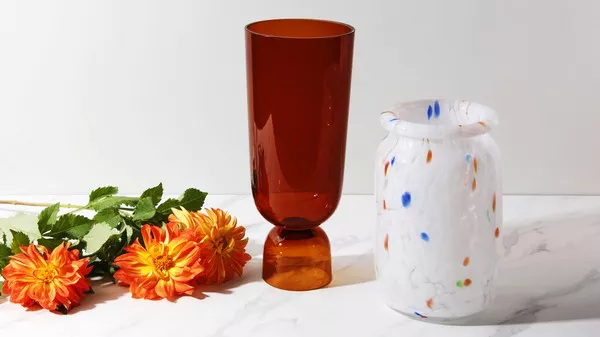Dried edible flowers have become a popular addition to culinary creations, offering a burst of color, flavor, and texture to dishes ranging from salads to desserts. Their delicate appearance and distinct taste make them a favorite among chefs and home cooks alike. However, understanding the shelf life of dried edible flowers is essential to ensure their quality and safety in culinary applications.
What are Dried Edible Flowers?
Dried edible flowers are exactly what they sound like – flowers that have been carefully dried to preserve their shape, color, and flavor. These flowers are typically harvested at their peak freshness and then dehydrated through various methods such as air-drying, using a dehydrator, or pressing. Common edible flowers include lavender, rose petals, violets, calendula, and chamomile, among others.
The Importance of Proper Storage
The shelf life of dried edible flowers largely depends on how they are stored. Proper storage is crucial for maintaining their quality and preventing spoilage. Here are some key factors to consider:
1. Humidity: Moisture is the enemy of dried flowers. Excess humidity can cause them to become limp, discolored, and moldy. It’s essential to store dried edible flowers in a dry environment to prolong their shelf life.
2. Light Exposure: Exposure to direct sunlight can fade the vibrant colors of dried flowers over time. To preserve their visual appeal, store them in a dark or opaque container away from light sources.
3. Air Exposure: Like moisture, exposure to air can degrade the quality of dried flowers. To minimize air exposure, store them in airtight containers or sealed packaging.
4. Temperature: Dried flowers are best stored in a cool, dry place. Avoid storing them in areas that are subject to fluctuating temperatures or extremes of heat or cold.
Understanding Shelf Life
The shelf life of dried edible flowers can vary depending on several factors, including the type of flower, the drying method used, and how they are stored. While dried flowers do not spoil in the same way that fresh produce does, they can lose flavor, aroma, and color over time. Here’s a general guideline for the shelf life of dried edible flowers:
1. Lavender: Dried lavender flowers can retain their quality for up to six months to one year when stored properly. Their fragrance may diminish over time, but they can still be used in culinary applications.
2. Rose Petals: Dried rose petals have a similar shelf life to lavender, lasting anywhere from six months to one year. They may lose some of their color and fragrance over time but are still safe to consume.
3. Violets: Dried violet flowers have a relatively short shelf life compared to other varieties, typically lasting three to six months. It’s best to use them as soon as possible for optimal flavor and appearance.
4. Calendula: Dried calendula flowers have a slightly longer shelf life, lasting up to one year when stored properly. They may lose some of their vibrant color over time but are still suitable for culinary use.
5. Chamomile: Dried chamomile flowers can retain their quality for up to one year or longer if stored correctly. Their delicate flavor may diminish over time, but they are still safe to consume.
Tips for Prolonging Shelf Life
While dried edible flowers have a finite shelf life, there are several steps you can take to extend their freshness and usability:
1. Proper Packaging: Store dried flowers in airtight containers or resealable bags to minimize exposure to air and moisture. Consider using vacuum-sealed bags for optimal preservation.
2. Desiccants: Adding desiccants such as silica gel packets to the storage container can help absorb excess moisture and maintain the flowers’ crispness.
3. Cool, Dark Storage: Store dried flowers in a cool, dark place such as a pantry or cupboard away from heat and light sources. Avoid storing them near appliances that generate heat, such as stoves or ovens.
4. Labeling: Properly label the storage container with the date of packaging to track the flowers’ shelf life. Use older flowers first to ensure freshness and prevent waste.
5. Inspect Regularly: Periodically check the dried flowers for any signs of spoilage, such as mold, off odors, or discoloration. Discard any flowers that show signs of deterioration.
Creative Uses for Dried Edible Flowers
Despite their limited shelf life, dried edible flowers offer endless culinary possibilities. Here are some creative ways to incorporate them into your dishes:
1. Garnishes: Sprinkle dried flowers over salads, desserts, or savory dishes to add a pop of color and visual interest.
2. Infusions: Steep dried flowers in hot water to create flavorful teas or floral-infused syrups for cocktails and desserts.
3. Baking: Fold dried flowers into cake batters, cookie dough, or bread dough for a subtle floral flavor and decorative touch.
4. Sugar and Salt Blends: Mix dried flowers with sugar or salt to create aromatic blends for use in baking, cooking, or rimming cocktail glasses.
5. Herbal Butter: Blend dried flowers into softened butter to create fragrant spreads for bread, crackers, or cooked vegetables.
Conclusion
Dried edible flowers are a delightful addition to any kitchen, offering beauty, flavor, and versatility to culinary creations. While they do have a limited shelf life, proper storage and handling can help prolong their freshness and usability. By following the tips outlined in this article and experimenting with creative uses, you can enjoy the beauty and flavor of dried edible flowers year-round.


